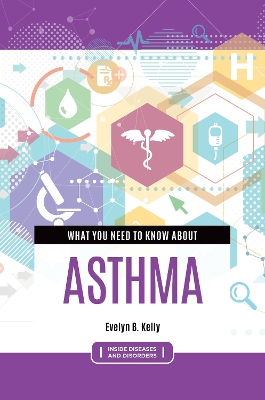Inside Diseases and Disorders
1 total work
While some individuals with asthma consider the condition only a minor nuisance, for others it significantly interferes with daily activities and may even be life-threatening. This book offers readers a broad introduction to this common respiratory issue.
Asthma is a respiratory condition marked by spasms, swelling, and excess mucus production in the bronchial passages of the lungs. This triggers coughing, wheezing, chest tightness, and shortness of breath. While asthma can usually be managed with medications and avoidance of certain triggers, it's a serious—potentially deadly—chronic disease.
What You Need to Know about Asthma is part of Greenwood's Inside Diseases and Disorders series. This series profiles a variety of physical and psychological conditions, distilling and consolidating vast collections of scientific knowledge into concise, readable volumes. A list of "top 10" essential questions begins each book, providing quick-access answers to readers' most pressing concerns. The text follows a standardized, easy-to-navigate structure, with each chapter exploring a particular facet of the topic. In addition to covering such basics as causes, signs and symptoms, diagnosis, and treatment options, books in this series delve into issues that are less commonly addressed but still critically important, such as effects on loved ones and caregivers. Case illustrations highlight key themes discussed in the book and are accompanied by insightful analyses and recommendations.
Asthma is a respiratory condition marked by spasms, swelling, and excess mucus production in the bronchial passages of the lungs. This triggers coughing, wheezing, chest tightness, and shortness of breath. While asthma can usually be managed with medications and avoidance of certain triggers, it's a serious—potentially deadly—chronic disease.
What You Need to Know about Asthma is part of Greenwood's Inside Diseases and Disorders series. This series profiles a variety of physical and psychological conditions, distilling and consolidating vast collections of scientific knowledge into concise, readable volumes. A list of "top 10" essential questions begins each book, providing quick-access answers to readers' most pressing concerns. The text follows a standardized, easy-to-navigate structure, with each chapter exploring a particular facet of the topic. In addition to covering such basics as causes, signs and symptoms, diagnosis, and treatment options, books in this series delve into issues that are less commonly addressed but still critically important, such as effects on loved ones and caregivers. Case illustrations highlight key themes discussed in the book and are accompanied by insightful analyses and recommendations.
